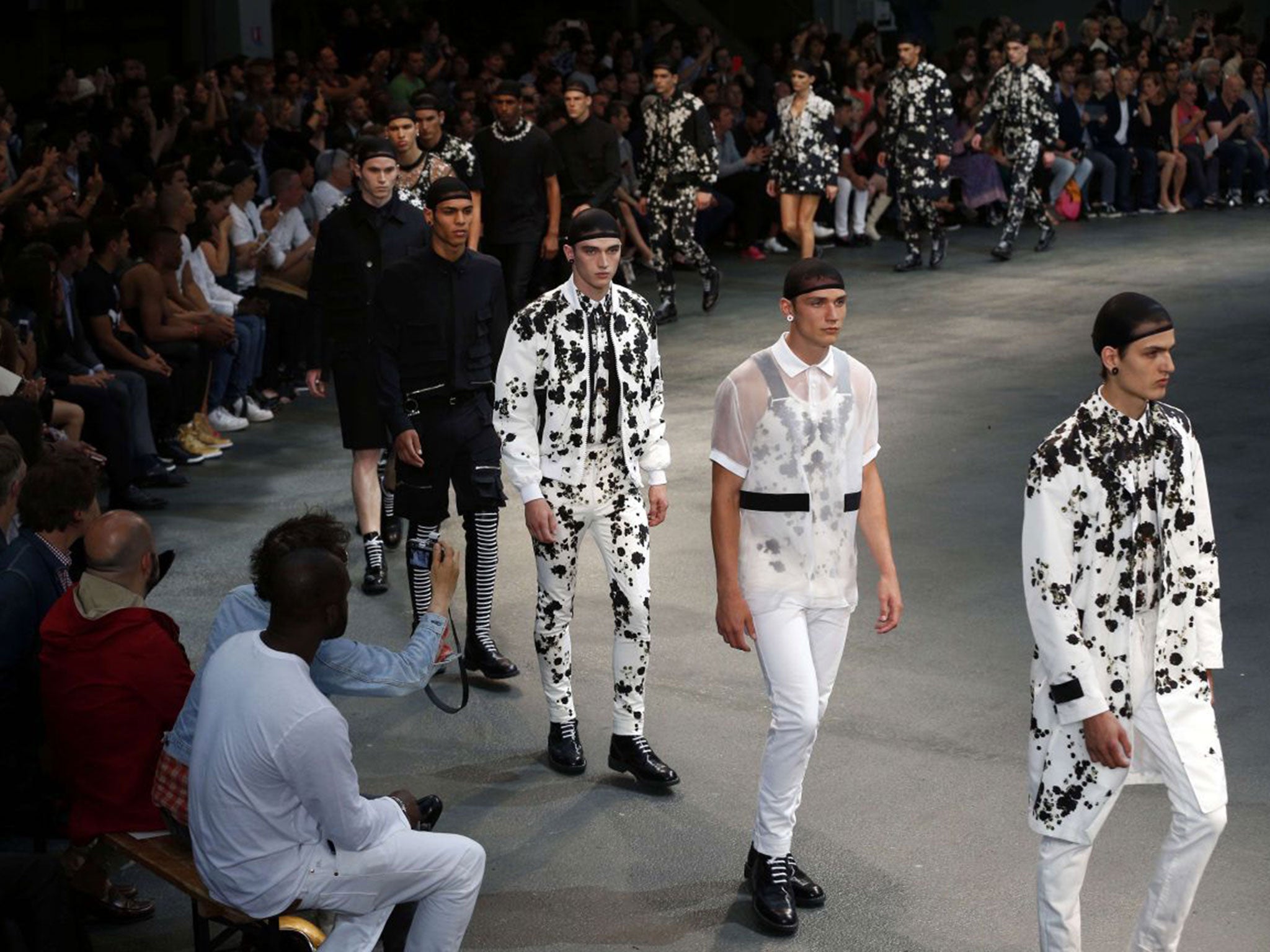Paris menswear showcase: Clothes maketh the man - and the profits
After languishing behind the women's sector, menswear is storming the luxury market

Men and women are finally equal. At least when it comes to fashion. Today marks the finale of Paris's spring/summer 2015 menswear showcase – the last stop in a whirlwind four-city tour that now easily rivals its female counterpart. Men's-only boutiques are springing up, while most labels have added menswear to their range over the past five years. There's even an irritating new buzzword for this newfangled equality: "Yummies" – Young Urban Males. Blanch at will.
Most telling are the fiscal facts: menswear has reached the golden mean, and now makes up 50 per cent of the world luxury market. This is thanks in large part to dominant menswear-only retailers – the suiters and booters who pack menswear fairs such as Florence's Pitti Immagine, where more than 1,000 labels showed their wares earlier this month. But times are changing in established fashion houses, too. At Versace, menswear counts for 46 per cent of the label's sales. And it's growing.
Menswear is growing in prominence, too. Last month, Fendi opened its first menswear department outside of Rome, in its new boutique on Bond Street in London. Why? the answer of Silvia Venturini Fendi, designer and scion of the house's founders, was simple.
"Why not? London is one of the most fashionable cities in the world," she said. "It's getting more and more important, menswear." Fendi has reflected that in its presentations: first standing, last season seated, this season a fully fledged rank-and-file catwalk show alongside competitors Dolce & Gabbana, Gucci and Prada in Milan.
Here are the economics. The world menswear market is expected to exceed £235bn by the end of this year. In the UK alone, it is worth £10bn, an increase of 12 per cent over the past five years, according to Mintel. This growth is generally attributed to China – a male-dominated market affecting the balance of the entire industry. HSBC estimates that sales in China will surpass Japan next year, transforming it officially into the world's biggest luxury goods market.
It's possibly already there. The World Tourism Organisation says that the Chinese are the biggest tourist spenders. Their expenditure increased 28 per cent in 2013, understandably, since luxury goods are 60 to 70 per cent more expensive in mainland China. Growth in the country itself is slowing – new controls on gift-giving have cut the demand for luxury goods – but are still buoyant. Bottega Veneta's sales rose 15 per cent in China in the first quarter of 2014, while Ermenegildo Zegna, the world's largest luxury menswear group, counts the nation as the largest portion of its €1bn annual revenues. So do most menswear brands.
All those figures are doubtless intoxicating for money men. Until recently, menswear was the great untapped resource of luxury, ignored while the planes of womenswear were plundered mercilessly. Now, the cash-rich fields of menswear are less being mined, more getting fracked.
Witness the injection of capital – some $80m – by LVMH into Berluti. Formerly known as a bespoke shoemaker, the house is now spinning into hyper-luxe menswear, headed by designer Alessandro Sartori, with Antoine Arnault, son of LVMH's chairman and CEO, as business brain. Never one to be left behind, in April, Prada announced plans to open 50 new menswear stores globally. The aim? To double the £640m menswear raked in during 2013.
What is the ultimate impact of all this on menswear? Shall we be honest? Stagnation. A conservatism. A commendable focus on craftsmanship, but frequently at the expense of intriguing design. That was the case in Paris over the past few days. The Berluti show on Friday was luxurious, sure, but safe, with a focus on traditional suiting and lush but basic separates. The Chinese consumer, incidentally, is known for being hyper-conservative in his choices. What a coincidence.
Riccardo Tisci's Givenchy collection also felt by rote. If shorts suits shown with high-laced boots and hairnets couldn't be classed as traditional by any stretch of the imagination, they were nonetheless conservative choices pulled from his aesthetic back catalogue. They also sell, as do the digitised print with which he smothered otherwise simple sportswear, some embroidered with pearls in designs inspired by gypsophila. They felt well crafted, rather than well designed.
"Traditions have to be maintained," intoned the press notes at Dior Homme – a reference to the John Doe anonymity of designer Kris Van Assche's navy suiting, jeans and striped sweaters. Those suits were slick, saleable but soulless. That could be a slogan for the static nature of much of the season's menswear. The money men won't mind. But the designers should.
Subscribe to Independent Premium to bookmark this article
Want to bookmark your favourite articles and stories to read or reference later? Start your Independent Premium subscription today.

Join our commenting forum
Join thought-provoking conversations, follow other Independent readers and see their replies